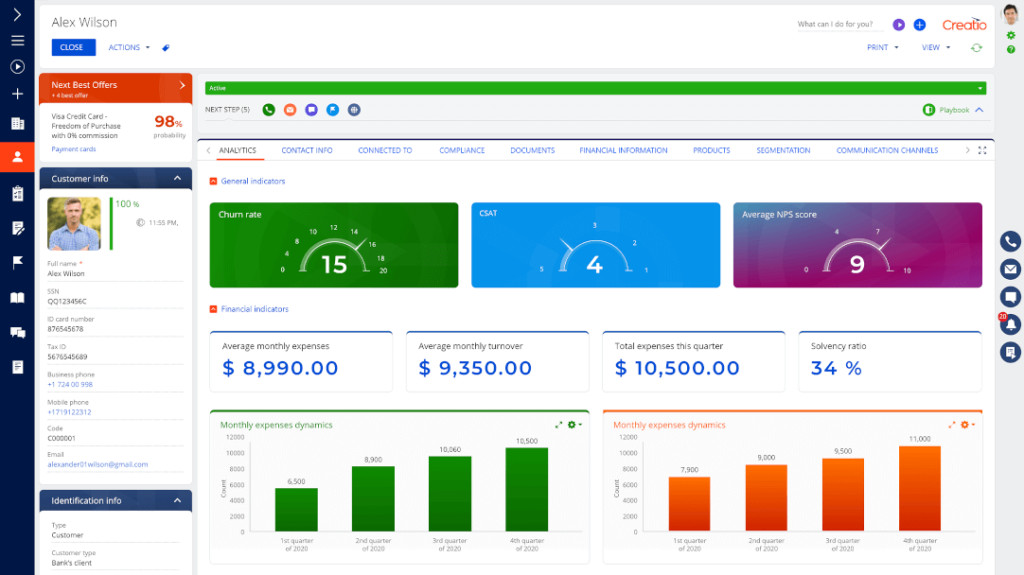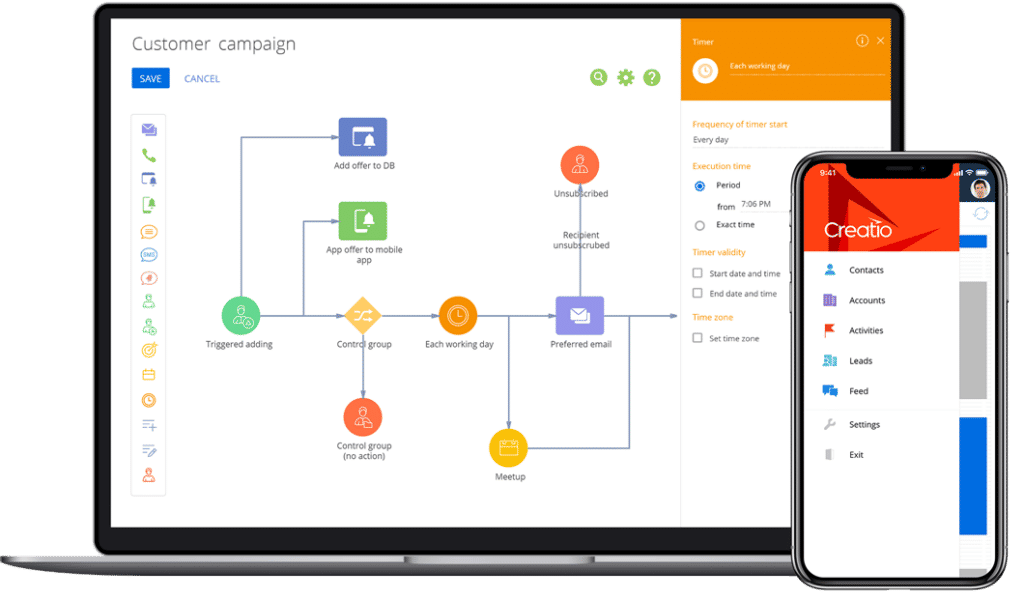In this article, we’ll look at what ERP systems are, why they’re so important, how they can transform your business, show you ERP system examples, find out what the best ones are and how to choose the right ERP system to give you an important competitive advantage.
What is an ERP system?
An ERP system, or Enterprise Resource Planning, is software that integrates and automates key business processes. From accounting to inventory management. ERP systems provide a unified platform to efficiently manage various processes in a company. Imagine one central place from which you manage, evaluate and coordinate all of your company’s activities to keep everything running smoothly and efficiently.
Advantages and benefits of ERP systems
Increased efficiency
ERP systems increase efficiency by automating routine tasks and simplifying complex processes. This leads to better productivity, reduced errors and better analytics.
Data integration and management
One of the biggest benefits of ERP systems is their ability to integrate different business processes into one comprehensive system. This integration allows data from different departments, such as finance, sales, procurement and human resources, to be easily accessible and managed from one place. This means that information is consistent, up-to-date and easily accessible to anyone who needs it.
Better insight and decision-making
With a centralized system, managers and teams can get a holistic view of business operations. This enables better data analysis, trend forecasting and more informed decision making. For example, if a problem occurs in a manufacturing process, the ERP system can quickly identify the source of the problem, allowing for a quick and efficient response.
Overview of information within the company
ERP systems improve the flow of information between different departments. Information can move without barriers, meaning all parts of the business are synchronized and working more efficiently. For example, inventory information is immediately available to the sales team, allowing for better planning and customer service.
Flexibility and scalability of modules
ERP systems offer flexibility and scalability, which is essential for business growth and adaptation. As your business evolves, an ERP system can grow with you, adding new features and modules as needed. This means that your investment in an ERP system is sustainable over the long term and supports the continuous innovation and development of your business.

How to choose the best ERP system?
When choosing an ERP system, you need to consider the size of your business, industry specifics and budget. It is also important to consider the customization and scalability of the system.
The selection process
Choosing the right ERP system requires a thorough analysis of your business needs and processes. It is important to choose the system that best fits your specific requirements.
Own analysis of needs and requirements
For a successful implementation of an ERP system, it is crucial to perform a custom analysis of the company’s processes and needs. This step will help you understand which system will be the best fit for your company.
Think about where you are now and where you are headed. By describing the current situation well, you will be better able to describe the new target state.
- What do you want to change?
Describe what should be changed in the company. What part or process do you want to change, deploy a new application or a collection of multiple applications. - What do you think is OK?
What works well for you today – in the area you want to address, in the processes and business – and does not need to be changed at all or at least not right away. - Where are the weak points?
On the other hand, what is not working at all or not optimal for you today.

Download the work-book for FREE and get a useful guide to create an analysis of your own needs and requirements, which you will be able to clearly specify to a potential supplier of a corporate system.
ERP system examples – The best ERP systems
When comparing ERP systems, it is important to consider factors such as functionality, price and user-friendliness. ERP system examples:
| Function / System | Oracle | SAP | Microsoft Dynamics | Helios | Creatio |
|---|---|---|---|---|---|
| No-Code Platform | No | No | Limited | No | Yes |
| User Friendliness | Good | Good | Very good | Good | Excellent |
| Flexibility and Customization | High | High | Medium | Medium | High |
| Integration with Other Systems | Excellent | Excellent | Very good | Good | Excellent |
| Industrial Specification Support | Very good | Excellent | Good | Good | Very good |
| Price | High | High | Medium | Low | Medium |
| Implementation Time | Long | Long | Medium | Medium | Short |
| Scalability | Excellent | Excellent | Very good | Good | Excellent |
| Mobile Device Support | Yes | Yes | Yes | Limited | Yes |
| Customer Reviews | Very good | Very good | Excellent | Good | Excellent |
From the above comparison of ERP systems, the Creatio system comes out as the winner for us.

Creatio: innovative solutions
Creatio is ERP system example that features a high level of customization and user-friendliness. Its flexibility and scalability make it an ideal solution for different types of businesses.
And what are the main advantages of Creatio?
No-Code Platform:
Allows users to create applications and automate workflows without writing code.
Maximum freedom to automate:
Offers flexibility to create and customize workflows.
Omnichannel CRM:
Integration of different channels for comprehensive customer relationship management.
Wide range of features and automations:
Includes options to automate marketing, sales, services and other areas.
Ready-made templates and connectors:
Accelerates the implementation process and increases efficiency.
User-friendliness:
Easy to use even for non-technical users.
Support and collaboration with partners:
Extensive partner network and support for implementation and development.
To learn more about how the right ERP system can transform your business, check out our bespoke business information system implementation service.






